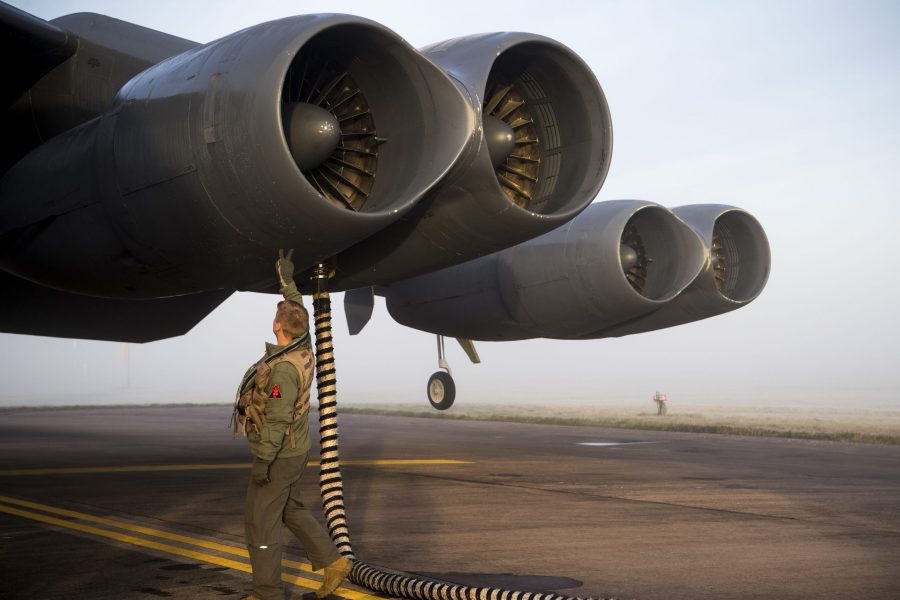The Air Force on May 19 issued its request for proposals on the B-52 Commercial Engine Replacement Program, calling for responses by July and a contract award expected in June 2021.
GE Aviation, Raytheon Technologies’ Pratt & Whitney unit, and Rolls-Royce have all said they will compete.
The service, in the RFP, confirmed it wants to buy a total of 608 engines to equip 76 B-52s, each of which mounts eight engines arrayed two each in four nacelles. For prototyping purposes, USAF will start with 20 engines—16 for two aircraft plus four spares. The first contract will be indefinite delivery/indefinite quantity, with production models delivered through 2037. The B-52 is slated to remain in service through 2050.
The program office assesses “significant risk” in “integrating current technology commercial engines on the 1950s-era B-52 aircraft technology,” according to justification documents. The heavily-redacted documents conclude that GE, Pratt, and Rolls are likely to be able to meet service requirements. Two other companies—their names redacted in the documents—“did not submit a viable solution” for the requirement.
The Air Force wants fuel efficiency savings of about 30 percent on the new powerplants versus the in-use Pratt & Whitney TF33 engines, and reliability such that the engines never have to come off the B-52 for service during the bomber’s remaining lifetime. This in turn will sharply diminish or eliminate the need to stockpile large quantities of parts, resulting in further savings. The Air Force has said that it expects fuel savings will pay for the cost of the re-engining program, which would also drive a reduction in maintainers assigned to the airplane. With the fuel efficiency, USAF is also looking for an increase in persistence or range of up to 40 percent.
The re-engining is the centerpiece of an overall B-52 technology refresh that will also include new radars, connectivity enhancements, and capability for new weapons, such as hypersonic missiles. Boeing, the original prime on the B-52, will handle integration of the new engines.
Rolls-Royce is offering its F130 engine, a variant of the commercial BR725, for the program, noting it is “already in the Air Force fleet,” company Senior Vice President Craig McVay said in a press release. The commercial version of the engine powers E-11s and C-37s.
“Should Rolls-Royce win the competition, the F130 engines for the B-52 would be digitally engineered, manufactured, assembled and tested at our facilities in Indianapolis,” he said, adding the company is “excited to move to the proposal stage” of the program.
GE is offering its CF34-10 and Passport engines, touting either as meeting USAF’s requirements. The CF34-10 has a track record for the time-on-wing USAF wants, and it has the lowest cost of ownership of any engine in the competition, the company said. The Passport offers the lowest fuel burn of any engine in its class for more payload and range, the company said.
GE also promotes itself as having done more re-enginings than any other company, noting the KC-135, C-5, and U-2 programs, adding that it provided the engines for the B-1 and B-2 bombers.
In a statement, Pratt’s Chris Johnson, director of mobility and diverse engine programs, said the company is “excited to offer the award-winning PW800 for the B-52 CERP competition.” The engine offers “industry-leading reliability, robust sustainment infrastructure, and significant fuel efficiency savings.” Johnson said Pratt has an advantage due to its “unique” 40-plus years of experience powering the B-52 and “with our expertise integrating commercial engines onto military applications.”
